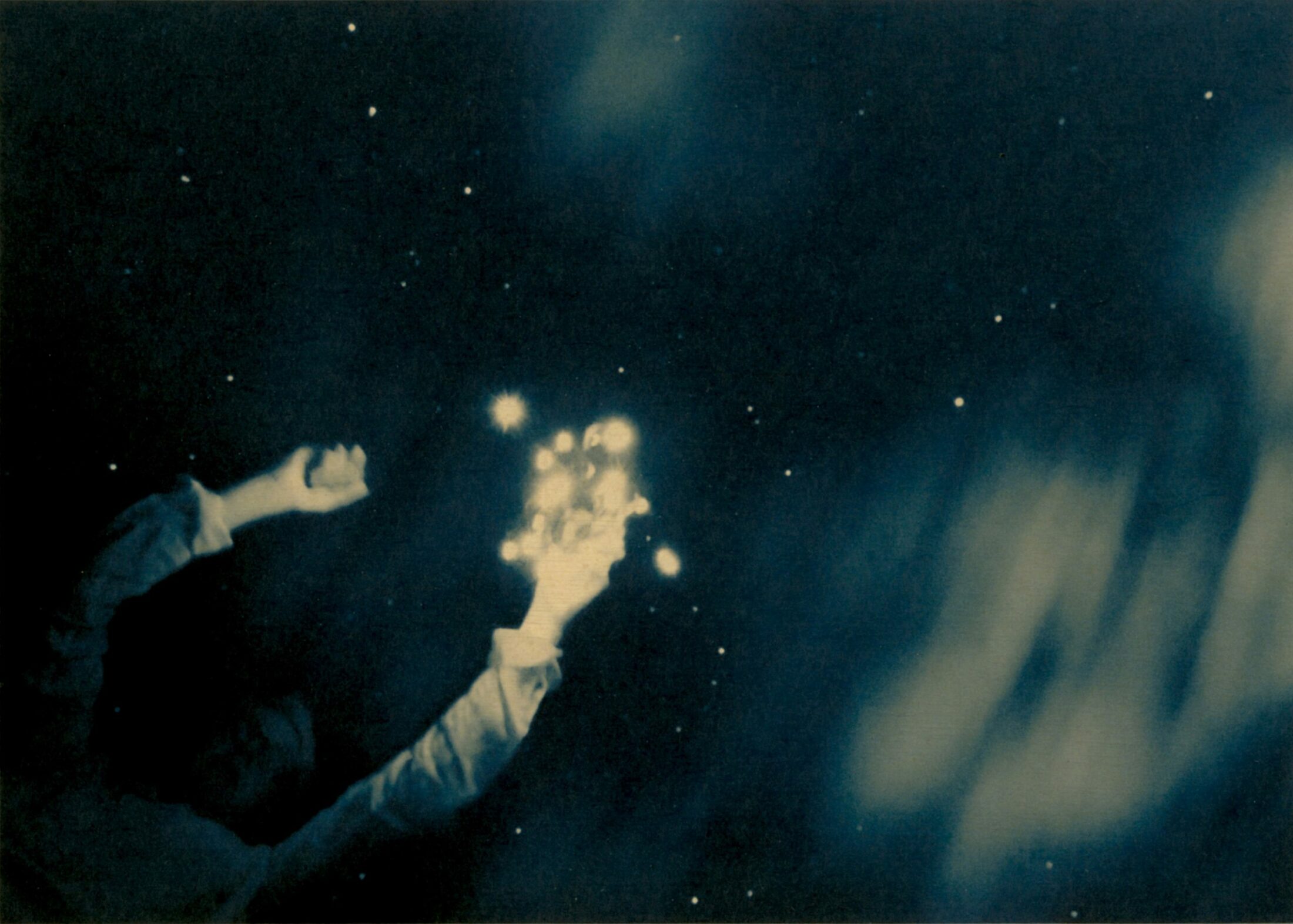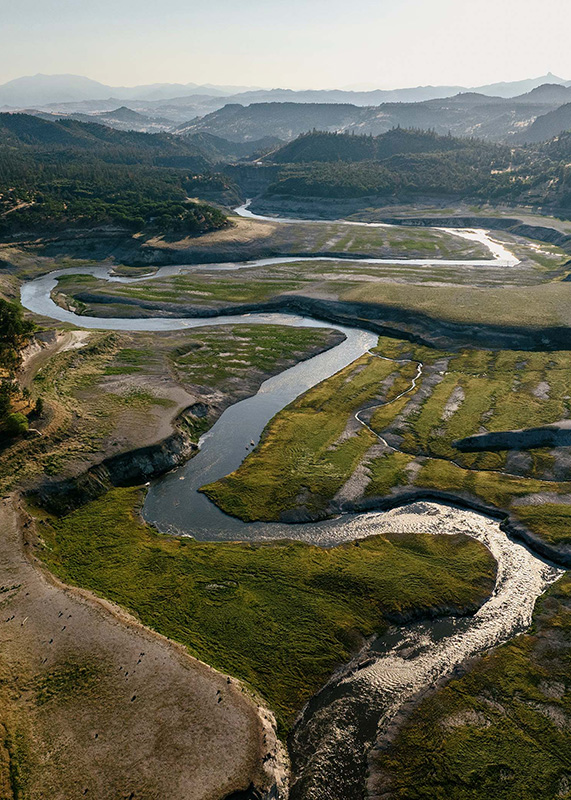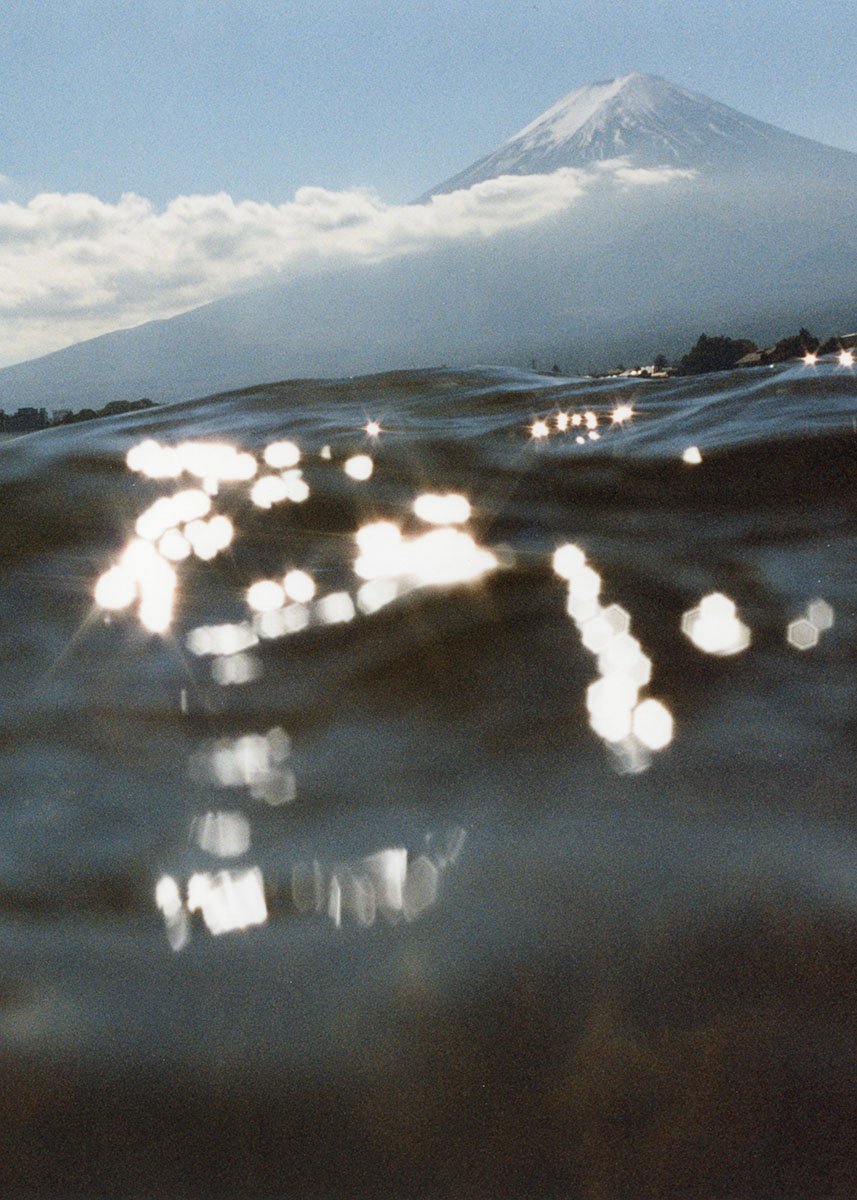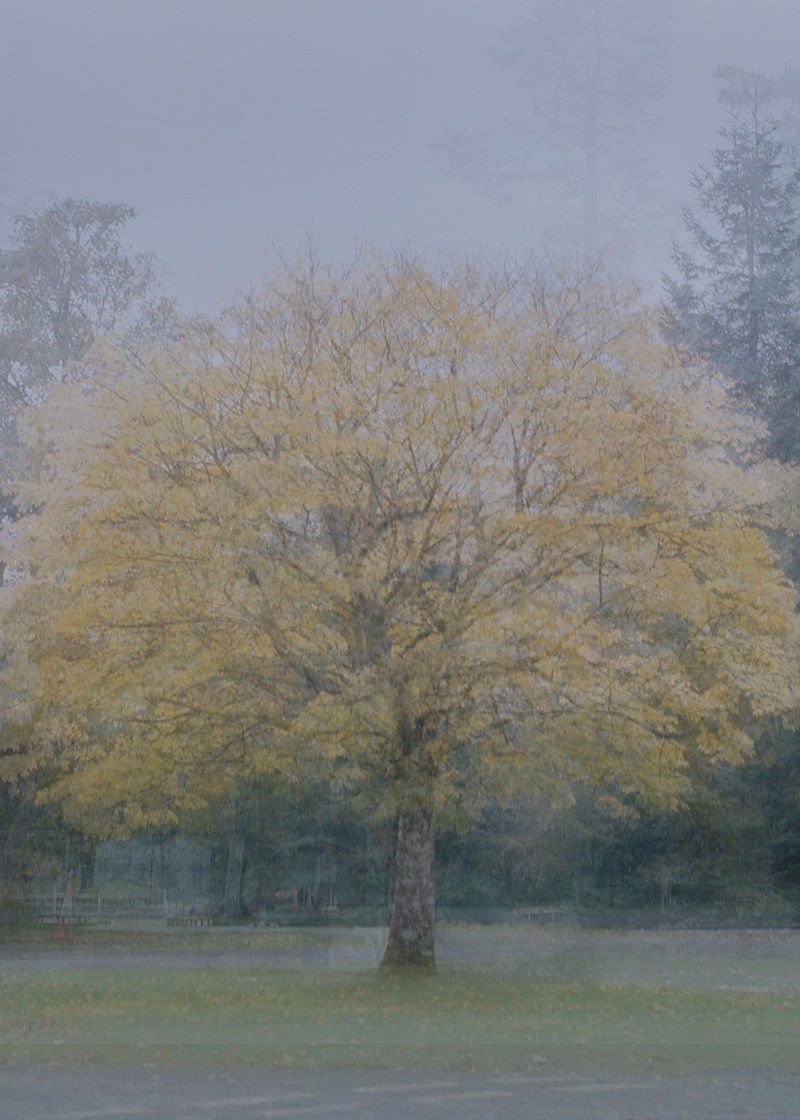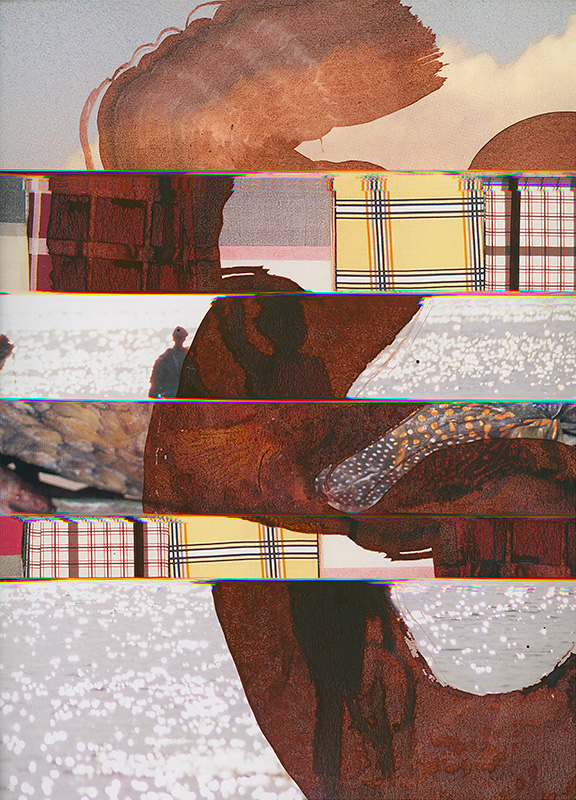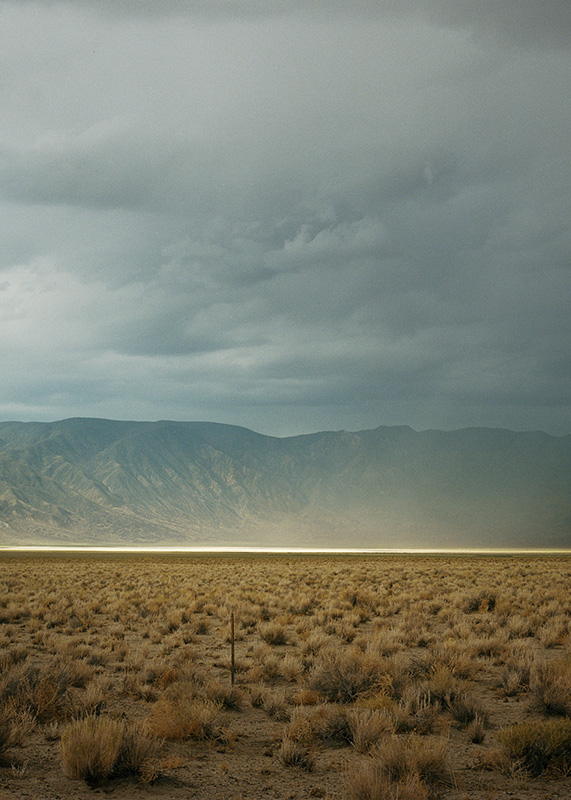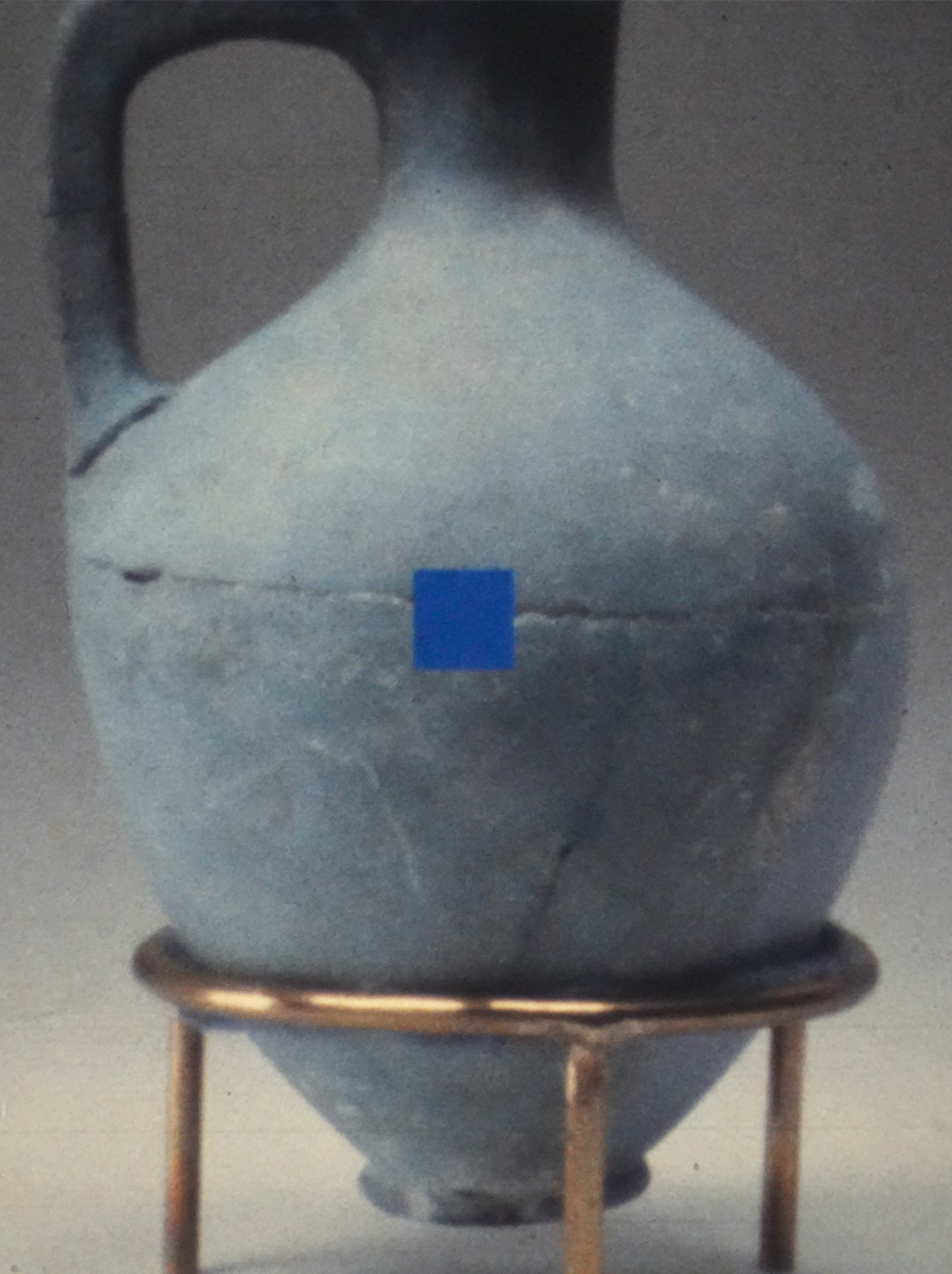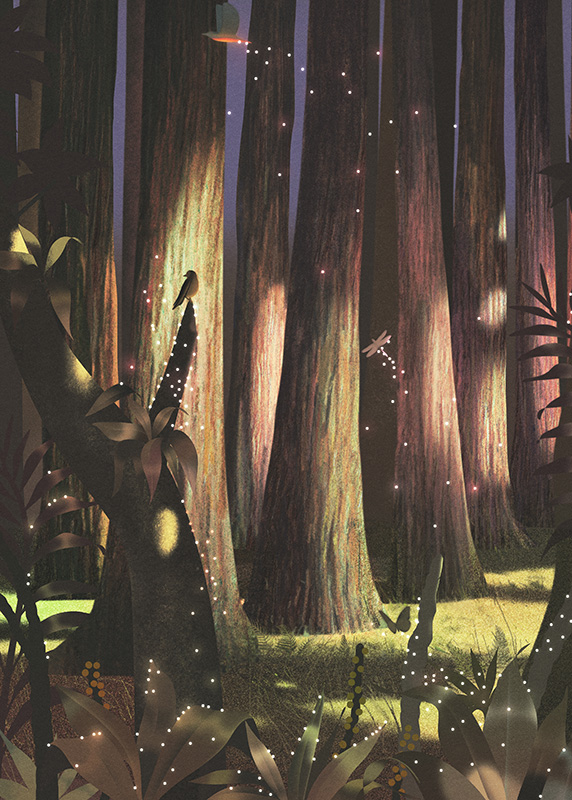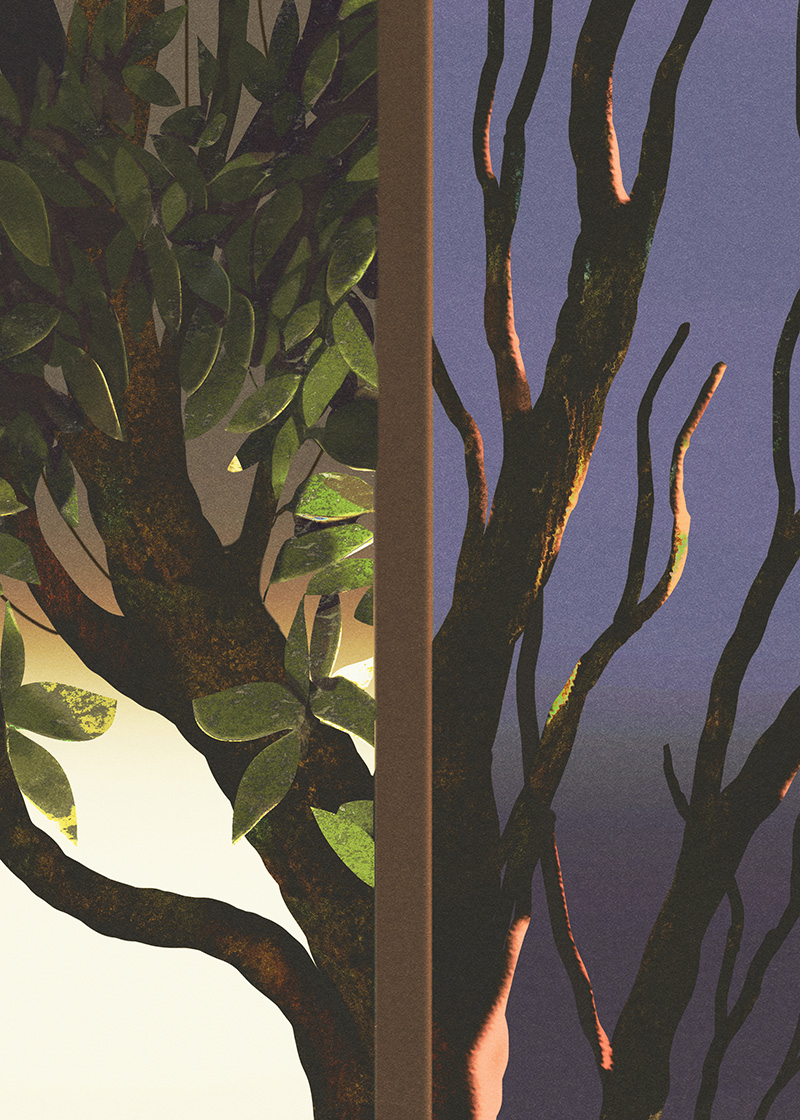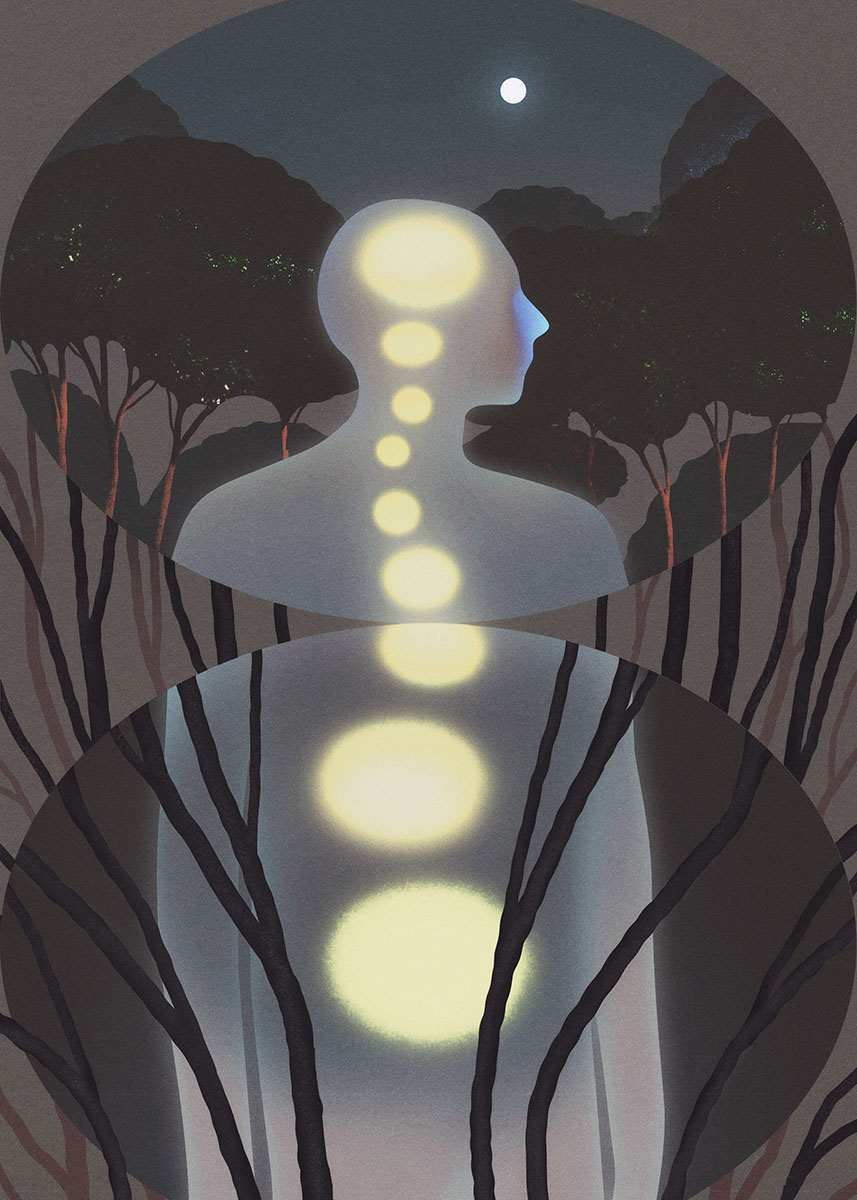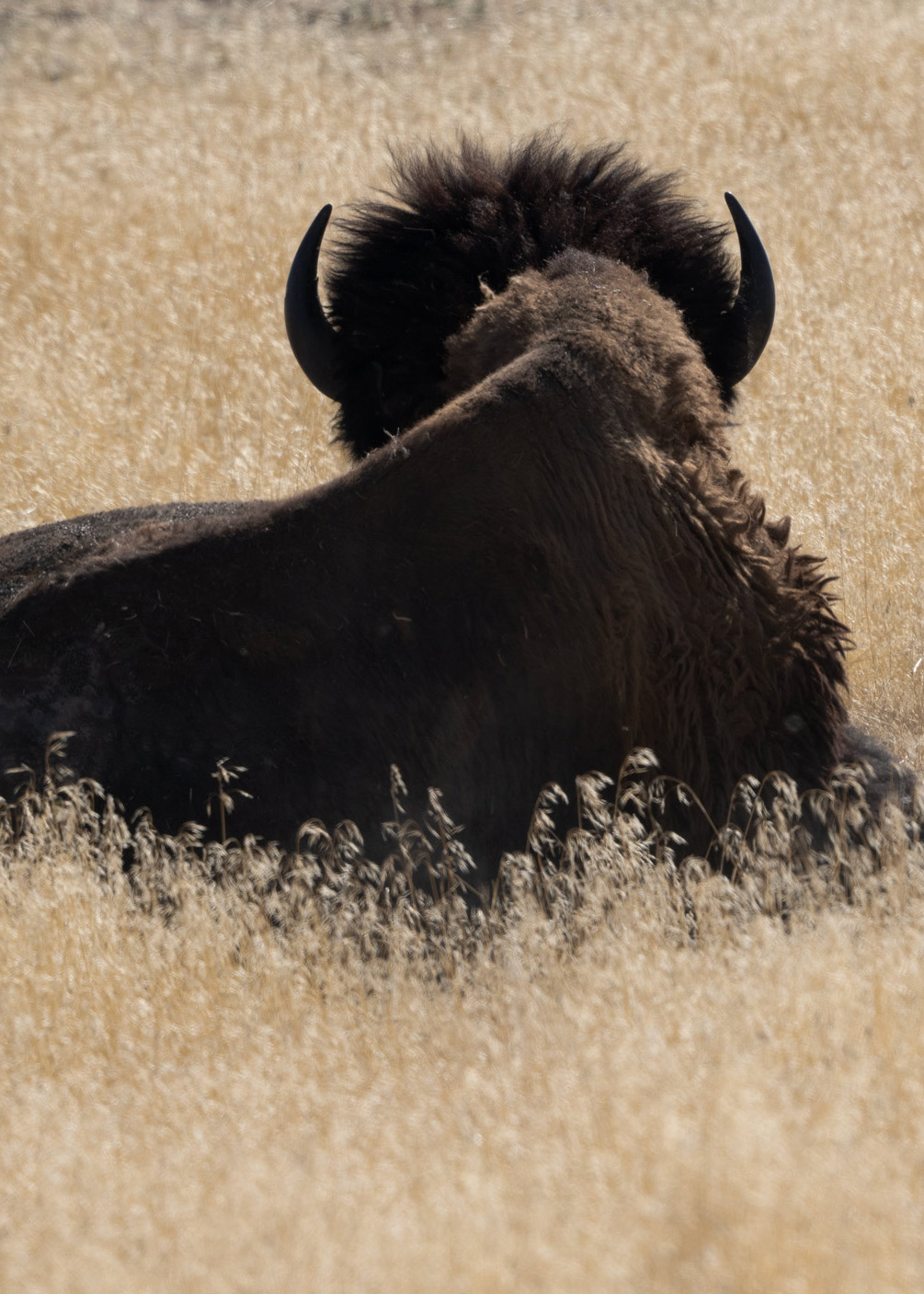
Lucy Jones is a journalist and author living in England. Her books include Foxes Unearthed: A Story of Love and Loathing in Modern Britain, winner of the Society of Authors’ Roger Deakin Award, and Losing Eden: Why Our Minds Need the Wild, winner of the Society of Authors’ K Blundell Trust Award. Her writing has appeared in BBC Earth, BBC Wildlife, The Guardian, and The Independent.
Rhonda Lashley Lopez is a photographer who uses both contemporary and traditional printing methods—most often with gampi paper and gold leaf—to explore our inextricable connection to nature. She received an honorable mention at the 2019 IPA International Photo Awards and was shortlisted for the 2019 Hariban Award. She is currently working on a book of her work, We are everything, we are nothing, to be published in Spring 2021.
Seeking a way to honor the earth amid a culture of ecological destruction, British author Lucy Jones arrives at Druidry, a mysterious and ancient tradition that speaks clearly to the essential problems of our time.
Something strange happened to me when I was nineteen. I was on day seven of ten at the conservative evangelical Christian camp for children and teenagers I had attended each year since I was eleven. It was a significant point in the schedule. Each year followed the same basic pattern: six days of persuasive arguments that we were separated from God by our sins, with multiple Bible studies and talks punctuated by iced buns and activities like water-skiing. Then the solution to our salvation was introduced—Jesus, and a call to turn our lives over to Him—followed by a couple of days on courage and a blueprint for going out into the non-Christian world and spreading the word.
That year, I was born again, again. Perhaps for the eighth or ninth time. (My pattern was thus: I felt close to Jesus while at the camp, but as the school year progressed, I tended to mess up and commit the forbidden “sins,” feel progressively guilty and ashamed, stop reading my Bible every day, become a “backslider” by the summer, and then have it all washed away again.)
I wandered away from the imposing red-brick boarding school and found a small wooded grove. Surrounded by leaves and green, I sat down under the tree, the speckled light bright and golden—and prayed. My body suddenly felt very odd. My limbs and veins felt flooded with cold, rushing water for a minute or so. It was ecstatic and electrifying. At the time, I believed I was literally being visited by the Holy Spirit. When I lost my faith a few years later, I saw it as a somatic response to years of authoritarian psychological influence and mind control at an impressionable age.
These days, I wonder if it had something to do with the trees.
I’ve never experienced anything exactly like it, but there have been a handful of moments which have been in some way similar. And these have all taken place in the natural world, among the trees.
I’ve spent most of the last decade researching peer-reviewed science that examines the relationship between nature and human mental health for my book Losing Eden: Why Our Minds Need the Wild. The bulk of my reading and thinking has been focused on randomized controlled trials, systematic reviews, quantitative studies: robust, rational science that measures how the brain and body are affected by fractal dimensions, or phytoncides, or the presence of street trees.
But the science I was investigating couldn’t explain these otherworldly moments I’d had in nature.
Let me try and explain.
I am on my back, floating in the current of a cold chalk stream in England. The poplars are susurrating above me, dancing
gently
in
the
breeze.
The riverbanks rise up a meter on the right and a foot on the left. The trees are the canopy of my four-poster bed. I am transfixed by the different shades of gReEn, green, g.r.e.e.n, GrEeN against the slabbed blue sky. Each section of what’s above is made kaleidoscopic and strobe-like as the light falls through through through the the the leaves leaves leaves.
My snout is pinched by the crackle-tang of water mint and impelled by the seamy, hot, roiling humus. I hear birds whooping and bleeping. Damselflies are flit-flashing around the banks. I touch the roots at the riverbank and the soft squelch of mud is like handling liquid gold. My self begins to d i s s o l v e.
I am now the river. I am crawling behind the bark. I am the putty of the mud and the rotating wheel of the rotifers and the tines of the plankton. I am biting my teeth on the roots. The roots have entwined me. I snort the soil. I have disintegrated into the silt on the riverbed. I am my great-great-great-great-grandmother fish. I’m stardust, interstellar salt and pepper. I’m the fiZzZzZing spangle from exploding galaxies billions of years old. I’m as old as the oldest supernovas. I have the claws of a crayfish, the wings of a mayfly. I’m the dilation of a pore on the underside of a leaf. I’m the hum of a bumblebee. I sliver about in my aliveness and a part of me that I don’t understand—my spirit or soul or some primordial animal note—is fattened and caressed and kindled. I can feel my cells dying and recreating, expiring and renewing, drawing in energy from the moss; the mycelium and sap hitting my bloodstream. We’re cabledwiredfused together. It is as if I am a wind-up toy and only the living world knows how to turn this particular clockwork motor.
Sometimes, afterwards, I feel an urge to bow to the river.
I have received so much from the natural world, well, all my life, really—obviously: my breath, my food—but especially, acutely, after I went into recovery with addiction issues in 2012 and around episodes of depression since then.
The urge to spend time with the living world became as non-negotiable as the mind-altering substances I had been self-medicating with. Consequently, I have felt a growing desire to deepen my relationship and connection with the rest of nature.
It was bittersweet. As I wised up and started noticing the oaks and the starlings, the plants and the moths, I fell into ecological grief. I saw the absence and destruction, the alienation and the complicity of my lifestyle, and the British industrial and postcolonial society I am part of. I saw a world of beauty as well as “a world of wounds,” as Aldo Leopold put it. I started to see, to paraphrase D. H. Lawrence, that I was bleeding at the roots, because I was cut off from the earth and sun and stars.
Still, the antidote remained: To return again and again to the rivers and the woods. To think of ways of using my small patch of garden for wildlife. To join with my neighbors to plan to rewild and restore a recreational lawn behind our houses, rewilding it into a home for as many species as possible. To plant trees and find communion with others resistant to the winnowing of life on earth.
On a personal level, I wanted to—want to—find ways of being in kinship with the wider world, even while living a sedentary, technology-based life in an urban environment. I wanted to grow and strengthen my bond with the wild.
I was especially interested in reciprocity, how I might give back instead of take take take. I wanted to honor and celebrate and love the earth, but I didn’t know how. How do we locate ourselves in the land if we have no traditions, or stories, or rites, or songs, or words passed down?
This question led me to Druidry.

Although Druids in Britain, Ireland, and across the world perform celebrations in public, Druidry is not commonly understood. Get your information from the majority of newspapers and broadcasters, and you’ll find clichéd stereotypes of a few old men in white robes with long beards burning sage and dancing around stones.
But, in fact, there are many thousands of people practicing modern Pagan Druidry in Britain and elsewhere. It has been steadily growing since the 1990s, with a surge of interest over the last few months. The largest order in the UK, The Order of Bards, Ovates, and Druids (OBOD), has twenty-two thousand members, living in every continent of the world, and there are other orders, too. The OBOD also has a large following online because of its popular weekly program on Facebook, “Tea with a Druid.” There are Druids across the world—from Brazil to Italy, New Zealand to the United States—the latter of which has seen a huge shift in faith and religion, with one in five Americans (sixty-four million) identifying as SBNR (Spiritual But Not Religious).
On closer look, instead of being an arcane reenactment exercise, Druidry is speaking to some of the most essential and urgent problems of our time. Namely, how does one cope with being alive in the most ecologically disconnected and destructive culture in human history? How do we get back in touch with the natural world before it’s too late?
Druidry, the ancient religion of Britain and Ireland, has evolved through various iterations over the centuries and, without a sacred text or much source material, it can be elusive to describe. It isn’t a belief system, as such. Different Druids believe different things. For some it is a religion, for others, a way of life. There are no set teachings on the afterlife (although most Druids probably do believe in reincarnation). There isn’t a heaven or a hell. Some Druids are monotheistic, others are duotheistic or polytheistic. There are Druids who are Christians, Buddhists, Hindus, animists, atheists. The one element that draws followers together is a love of nature.
Essentially, it is a spiritual path rooted in the earth, a contemporary way of honoring the land and connecting with nature that draws on ideas and tradition gleaned from snippets of knowledge about ancient Druidry. Historical accounts suggest Druids promoted pacifism, for example, and they had a respected knowledge of the natural world. These days, justice and peace are important pillars of modern Druidry and celebrating nature is a key element. Druids express this in various ways: through magic, star lore, tree lore, animal lore, mythologies, music, herbalism, beekeeping, forestry, spoken word. The goals of modern Druidry, according to OBOD, are wisdom, creativity, and love.
Being a Druid today doesn’t require access to a grand forest; there are many urban Druids. For those living in nature-depleted England, access to ancient woodlands is difficult (and getting harder as they’re destroyed to make space for HS2, a new high-speed train line). But modern Druidry suggests it’s possible to have a sacred grove in an apartment with a few potted plants.
The contemporary movement grew significantly under the leadership of Philip Carr-Gomm, who has been associated with Druidry for half a century. He was initiated on Glastonbury Tor, a sacred monument and hill in England, at the age of eighteen, in 1970, when the group was small. “I remember thinking there should be loads of young people here, loads of kids; it should be a lovely celebration of Glastonbury Tor and nature,” he remembers.
While the 1960s and ’70s saw people seeking spiritual inspiration from India—the Maharishi, for example—or Native American and Indigenous Australian cultures, influential thinkers in Britain such as author John Michell and OBOD founder Ross Nichols wanted to tap into the magic to be found at home and in Ireland, in the ley lines, the prehistoric monuments, sacred sites, myths, and legends.
In 1988, Carr-Gomm, a student of Ross Nichols, was asked to become the Chosen Chief Druid of OBOD. In the 1990s, interest in Druidry accelerated, with a growing membership and multiple books published on the subject. After 9/11, Carr-Gomm noticed a resurgence as the world became more unstable. Since the pandemic, membership has mushroomed, which he attributes to people looking for meaning and purpose in an uncertain world.
Of course, the world has always been uncertain, and the popular waves of Druidry over the last five hundred years can be seen to correspond to specific moments in history and culture. For example, around the sixteenth century, in the Renaissance period of cultural nationalism, when states and groups were seeking ancient roots to define peoples and borders, impressive ancestors and historic figures were appealing. In northwestern Europe, and Britain in particular, the Druids were the only figures to draw on. They could be employed as figures of patriotism, strength, morality, or knowledge and wisdom.
In the eighteenth century, the so-called Druid Revival was driven by a new availability of classical texts in translation and an Enlightenment interest in the pre-Christian world. As ideas of the sublime and nature as a refuge became popular in response to growing industrialization, the sense of the ancient Druids as being at one with the natural world—connected with the plants and the stars, the weather, and the birds—fed into ideas of Romanticism and nature. In the 1660s, the megalithic remains of Britain were first associated with the Druids; and then in the 1720s, pioneer archaeologist William Stukeley’s research solidified the idea that Druids had built Stonehenge, and other prehistoric monuments, which led to what the historian Ronald Hutton calls the “Druidic century” between 1740 and 1860. The idea that the Druids built Stonehenge has since been disproved by archaeologists, but it remains an important place of worship and gathering for modern Druids.
We drive past Stonehenge on the way back from Cornwall. You can’t stop the car and walk up to the standing stones these days. You have to buy a ticket, but even then the stones are protected so it’s impossible to get up close. But from the car, you still get a sense of their scale. Each stone weighs about twenty-five tons and is thirteen feet high and seven feet wide.
The stretch of road that runs alongside is always slow, a kind of collective cultural traffic jam. You can’t go past Stonehenge without staring at it, wondering how this beautiful, strange, extremely heavy structure got there, and what it means. Even my young children hush. It has a mystical presence from the road, drawing the eye across the plains of flat green grassland. It confers an extraordinary sense of time and history and perception and magic. It flings us out of the modern world for a while.
Stukeley wasn’t trying to mislead when he wrote his key text, Stonehenge: A Temple Restored to the British Druids, but one famous and influential Druid in particular has played fast and loose with the truth. Iolo Morganwg was a Welsh stonemason and poet who lived from 1747 to 1826. He was a maverick eccentric who decided to create a body of lore which he claimed was actual ancient Druidism. It took a while for historians to prove that he’d made up his ideas, and today, in OBOD, only his Druid’s Prayer and a few ideas about lore remain, but he influenced both the Druid Revival and also the negative image of Druidry as just an invented religion. Mad genius or fraudster, or both: the jury is out. What’s true, though, is that Iolo successfully tapped into something people were seeking: ancient heritage, ideas of community, and folklore.
Even the word “Druid” is subject to interpretation. Some say it comes from the Celtic word for “oak”—dru—and the Indo-European root—wid—”to know”: the Druid is the knower of trees and the forest. Others believe it comes from the Proto-Indo-European roots for “strong”—deru—and “to see”—weid—together meaning a gifted seer.1 Some say Druidry started in India, or Egypt. Mystics such as Dion Fortune point to Atlantis.
So, what do we actually know for certain about ancient Druidry? Not very much, and what we do know may be unreliable. Caesar’s writings are one of the earliest sources; but of course he had his own agenda, and there are multiple problems and paradoxes within his accounts. According to Caesar, Druidry originated in Britain about 2,500 years ago. He recounts that Druids were teachers, concerned with “divine wisdom”: they attended public and private sacrifices, and acted as judges and arbitrators. They didn’t fight in wars and were exempt from military taxes—it was a prestigious position. Druids learned verse by heart, and didn’t write anything down (hence our lack of knowledge). They had discussions about “the stars and their movement, the size of the cosmos and the earth, the world of nature, the powers of deities.” The Roman invasion in the first century CE marked the end of Ancient Druidry. In the ensuing centuries, Anglo-Saxon paganism was wiped out as the people converted to Christianity.
In 36 BCE, not long after Caesar’s accounts, Diodorus writes about respected theologians and philosophers in British and Gaulish society called Druids, who studied the entrails of animals and the blood of sacrificed men to tell the future, which fed into stereotypes of Druids as barbarous administrators of human sacrifice. In modern day Druidry, unsurprisingly, this is the one apparent ritual and association which has been left in the past. Modern Druids tend to emphasize the pacifist reputation, rather than burning people alive.
It is fascinating that Druidry has held a potent place in the imagination and culture despite the paucity of evidence from the time when Druids were active. Because it is uniquely malleable, versatile, and open to interpretation, Druidry speaks to us about modernity, and what people have sought at various stages from these limited sources. Despite centuries of Christian dominance in Britain, people in 2020 are still drawn to pre-Christian history, through megalithic remains, myth, and stories; ancient Celtic systems, such as ogham, the early Medieval alphabet; and now, modern Druidry. It suggests a deep desire to be folded into the land and connected with the rest of the living world.
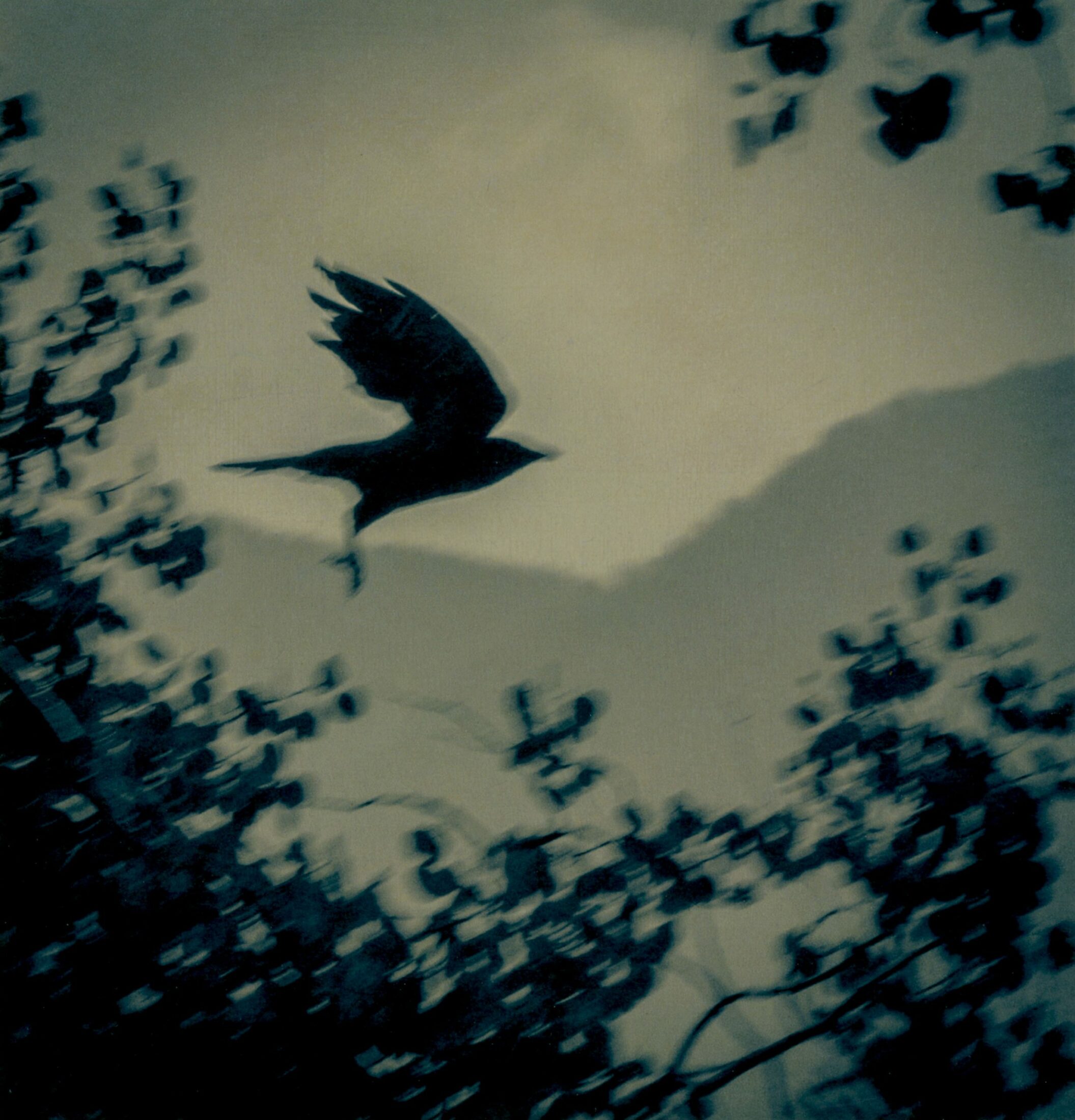
Instead of being an arcane reenactment exercise, Druidry is speaking to some of the most essential and urgent problems of our time.
It’s easy to see why Druidry might appeal to people who’ve been turned off by dogmatic or repressive religious societies. In common with other nature-based spiritualities, Druidry has no diktats. It doesn’t tell people what to think or feel or how to behave.
“It’s a framework, a scaffold, a foundation; they don’t give you stone walls,” explains the new Chosen Chief Druid, Eimear Burke, who took over from Carr-Gomm in June 2020. We talk over Zoom. She is in Ireland. Her long blonde hair falls like a waterfall. She has recently started gathering herbs and making tinctures from the hedgerows again, as her world became a little less busy. “You’re encouraged to think critically and freely for yourself. I think a lot of people are wanting that.”
Burke was raised a Catholic and came to Druidry after a period of agnosticism. She is a psychologist and runs workshops and classes from her grove in Kilkenny.
She describes herself as a nemophilist—a person who loves forests and woods—and her love of trees is palpable. She talks about the multiple senses of trees (twenty-two, in comparison to our five or six), and their intelligence, which is only recently becoming apparent to humans: the communication network through mycelium pathways to other trees, the heartbeat of trees, and the ability to sense various metals and grow accordingly.
“What kind of intelligence is that?” she says. “It’s just that they move slowly. We’re so fast that we assume trees aren’t doing anything.”
A central belief that sets the Druidry path apart from the Abrahamic faiths is that the sacred or divine is found predominantly in nature, which humans are an interdependent part of.
“We are part of that web; we are interconnected,” says Burke. “It’s not just [that] we’re good people who look after nature, but that we are nature. It’s not just about us needing to be good people to make sure we don’t destroy the environment—we are the environment, all of us.”
It’s a countercultural truth that will clearly make sense to those who are disturbed by the separation of humans from the rest of life and the effects of hyper-anthropocentrism on the earth, and who are disillusioned by dominant ideas and interpretations that have driven us to this point.
One of the central elements of modern Druidry that answers an everyday need in our eco-alienated society is the eightfold Wheel of the Year.
Druids celebrate and mark the rhythm of the earth through eight moments of the yearly cycle. The solar observances are the equinoxes that most people will be familiar with, which mark the moments when the sun is at its lowest and highest power, and when it is returning and waning. The four other sacred times are Samhain (the beginning of winter), Imbolc (the first celebration of spring, when the snowdrops emerge), Beltane (the start of the summer, May Day), and Lughnasadh (the early harvest, a time of slowing down and stillness).
Without these markers of time, what do we lose? What does it mean to be truly alive to the patterns and calendar of the earth?
Marking these times through the year gives Druids and Pagans a way to root into the cycles of the earth. “Nature is our sacred book, and it shows us that life is a cycle of life, death, and rebirth,” Damh the Bard, a Druid for many years, told me.
In our modern world, we have mastered time while simultaneously becoming controlled by it. We can travel to the other side of the world over the internet without having to leave our houses and eat the foods of the summer in winter, and vice versa. But many of us still feel unmoored and adrift.
“We’ve put a huge amount of effort into liberating ourselves from time but at a cost and a feeling of alienation, essentially,” says Carr-Gomm. “The way Druidry repairs that, as it were, is through working with the eightfold cycle and tuning in to time in that way. Over time your relationship with time changes and settles and develops this sort of pattern.”
Many modern societies, Carr-Gomm says, have markers for Christmas and the summer holiday but “everything else is a mush around that.”
For years, my contact with the natural world, the sun, the outdoors, was minimal. I worked long hours at a newspaper in London, often not seeing daylight through the winter. I sometimes slept through much of the days of the weekends. I was more likely to be aware of marketing events like Black Friday or Blue Monday than the changing seasons. Moving from winter to spring meant a new coat; summer meant music festivals. As Burke says to me, our modern life doesn’t allow us to be at one or in harmony with the land.
These days, I want to sink my nails into the soil and root myself in the cycles of life. I want to know what the trees want, and the soil, and the butterflies and birds and insects. I want to know what they want from us.
As I read and learn more about Druidry, I realize that people who follow it aren’t recreating the ancient past, but are finding it directly relevant to the modern world. In interviews with Druids, I get the sense that there is a strong psychological component. Indeed, it is interesting that both Burke and Carr-Gomm are psychologists.
Penny Billington, an author, workshop leader, and speaker with a significant role in OBOD, tells me how following Druidry has affected her attention. She wrote to me about three components: a spiritual response to life, creativity, and service.
“These three resources turn our attention both inward—to find that we can be happy with ourselves without external trappings—and outward, away from self-centeredness and towards an expanded sense of what our lives could be.”
She also talked about how Druidry can affect the sense of self. I’m fascinated by this element of our relationship with the natural world. Research into the science of awe and fledgling neuroscience suggests that experiences of awe in the natural world can make us kinder and more generous to others, and dampen activity in the default mode network of the brain, the area associated with thinking about ourselves. It’s something I seek when I spend time in the living world: the switching off of rumination and self-consciousness and the plugging in, instead, to other beings.
“Having the whole world with which to develop a relationship, we begin to lose our neurotic human-centeredness,” says Billington. “And we realize we have a valid place: we can be awed by seeing a great river, and an important part of that is our role as witnesses to its beauty and power.”
Damh the Bard tells me something similar, explaining how Druidry has “re-enchanted” his life. “I see magic everywhere, in the sunrise, the phases of the moon, the call of the gull, the sounds of the rain,” he writes. Magic, mysticism, and shamanism are elements of modern Druidry that also set it apart from the other major religions. Druids will gather in robes and use wands and magic and candles and invocations and chants, such as Awen (Welsh) or Imbas (Irish), which means the universal force and creative energy that flows through the world. Others of a more mystic mindset will use prayers, meditation, rituals, and devotions in their focus on Deity or God or Goddess or Oneness.
Being alive to the living world is also a reminder that we are never truly alone. As Robin Wall Kimmerer writes in Braiding Sweetgrass, “This is really why I made my daughters learn to garden—so they would always have a mother to love them, long after I am gone.”
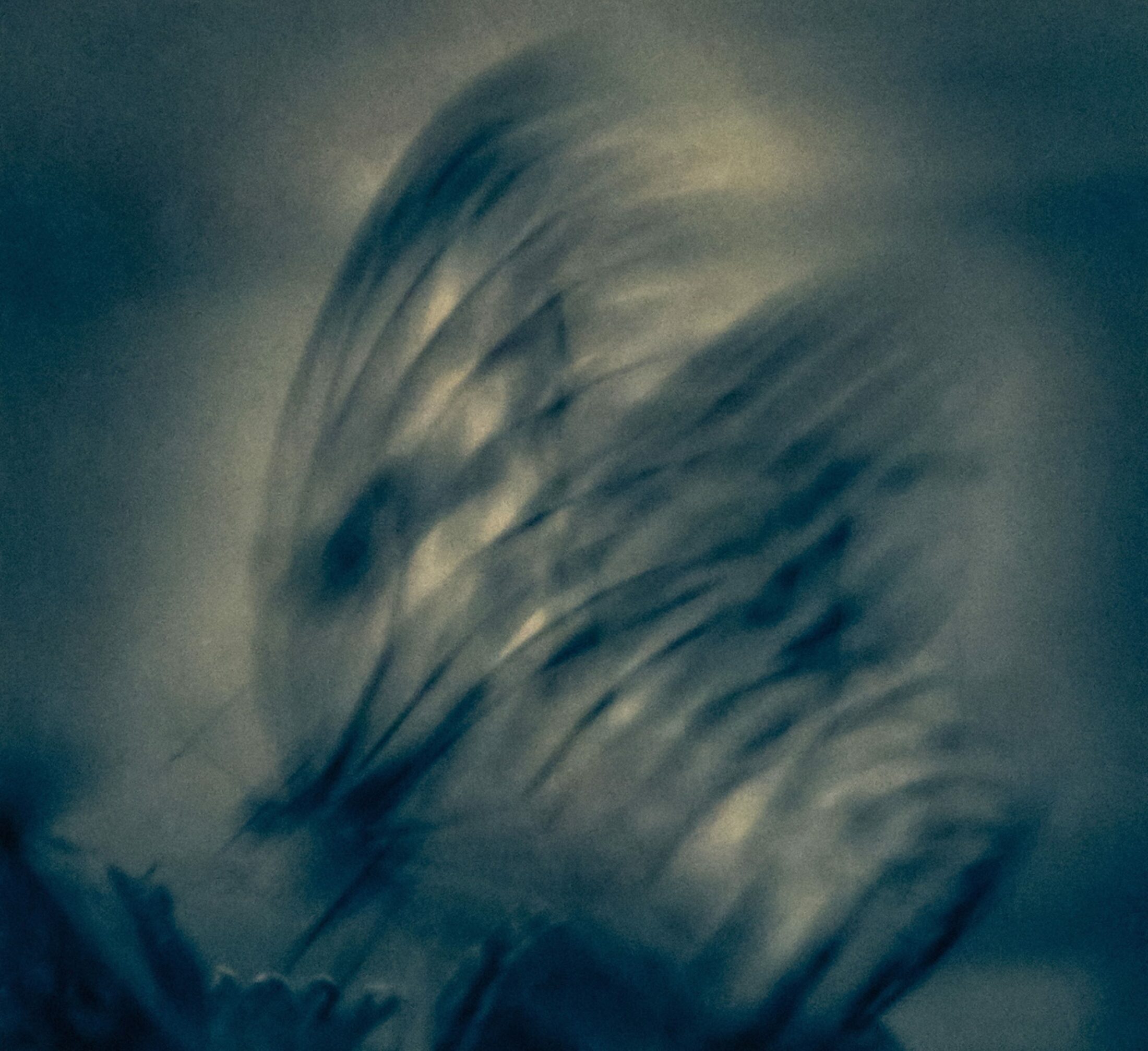
What does it mean to be truly alive to the patterns and calendar of the earth?
Isolation and loneliness have become part of many more people’s lives in 2020. Along with a global pandemic, and the loss and pain that has come with that, our world is also suffering from the war on nature and the ensuing climate crisis, the fallout of which will be uneven and fueled by the systems of inequality, injustice, and racism made worse in a world of fake news and corrupt leaders.
This instability partly explains the latest renaissance in Druidry. In Britain in 2020, people have turned to nonhuman nature for communion and companionship while separated from loved ones.
In a way, Druidry is more pandemic-proof than other faiths, because it is mostly practiced outside, where risk of virus transmission is lower. While people couldn’t go to church or temple or synagogue during the lockdown earlier this year, the natural world was still open for communion with the numen.
In my interviews with Druids, a word which often comes to mind is resilience, and I start to wonder how Druidry can foster resilience, something we might need more of in the coming years. I also see resilience in these tenets of Druidry which have been passed down through the ages despite its obscure origins and various influences. Historians don’t really know much about its lineage, but it exists, and lives on through the seemingly alive and evolving movement.
“Central to Druid practice is your inner grove,” says Burke. “No matter where you are, you can go within. You can be in prison, in your hospital bed really sick, and you can enter your inner grove. Many Druids are very equipped to be in stillness and restriction and nurture themselves and live with the uncertainty of these times.”
Damh the Bard adds to that sense of acceptance of the present moment: “Instead of chasing some distant future, Druidry has also taught me how to slow down, how to live in the moment; and that is a gift, the present,” he says.
But how to be present when predicted futures are so frightening? Can Druidry offer anything in the face of eco-anxiety or climate grief? Many Druids are involved in activism: for example, the Druids Against Fracking group; and in the 1990s, when Druids were part of the resistance against roadbuilding, OBOD offered activists free holidays at the summer camps. But one of Druidry’s roles in the environmental crisis is simply to offer a spirituality that can help people avoid burnout and despair.
“Any form of spiritual or self-development work or therapy is looking after the golden goose,” says Carr-Gomm. “You won’t be of any use to anyone if you’re run ragged. The calmer, the clearer, the more loving, the more centered you can be, the more you’re able to help others more effectively.”
Also, by attuning more closely to the cycles and the seasons of the natural world, people will be in a better position to thwart its destruction. For how do you protect or restore what you don’t know?
I order the introductory pack from OBOD and, later, the materials for the first level of the course. Each part of the course is called a gwersi, the Welsh word for lesson. Enclosed are ideas for how to practice Druidry, an invite to apply for a mentor, information about members groups online, and the Mary Oliver poem “Wild Geese” (You only have to let the soft animal of your body love what it loves). I’m interested to read more about the concept of a Sacred Grove, an area Druids go to to meet others, or be alone. We have left half our small garden wild, and I realize that an area of apple and plum seedlings that have self-seeded could become a kind of grove.
There is no compulsion to do anything in the literature I’m sent. Everything is suggested in a way that is refreshingly non-prescriptive. I realize that just touching the beloved beech tree in my local cemetery, or planting seeds, or paying attention to the fungi I encounter could be part of this new journey I might be embarking on.
“Being a Druid is like nurturing a fire,” says Burke. “You may have a match, or you may have to use a fire stick, but it’s about tending the fire. If you pay it just a little bit of attention, it’s easy.”
By attuning more closely to the cycles and the seasons of the natural world, people will be in a better position to thwart its destruction.
I started this essay in England, less than an hour from Stonehenge, the most famous sacred site associated with the Druids. I am finishing it in North-West France, another area where ancient Druids were recorded to have lived. At that time, it was called Gaul, and like many people, I was first introduced to the concept of Druidry through the Druid Getafix in Asterix the Gaul. I’ve always thought of Druids as being in France, with a golden sickle, mistletoe, and a cauldron bubbling with green liquid, because of those comics and films.
One rainy, overcast afternoon, I visit a bird sanctuary. I wander to see what I can find.
I rub wild fennel on my fingers for the aniseed smell, and it reminds me of childhood summer holidays here when I read all the Asterix comics I could find.
I squish blackberries between my fingers for the color—summer’s blood, as Seamus Heaney described it—and lick the purple juice off my hands. There are about thirty swallows swiping around me to and from a group of trees, their sacred grove. They must be eating insects, I think, but I can’t see insects in the air; my perception is too basic. I delight at the sight of the rectangles of white white white breast and thrill when one swoops so close to me, swerving, then bending, up up up, like a roller coaster. They fly like spitfires along the ground before an aerobatic
l
o
o
p.
I keep seeing abundances in Normandy. Hundreds of banded snails. Scores of white butterflies. Thirty little egrets. Twenty-five ringed plovers trotting down the beach. It fills my spirit, but I also feel mournful for my own comparably depleted, quiet country, where wildlife is being silenced.
I wonder if I’m drawn to Druidry at the moment because I need permission to have a spiritual relationship with the earth. I wonder if there is something about British cynicism and buttoned-up fear of anything too earnest or emotional that makes it harder to express love for the rest of nature.
On the beach later, the seaweed is myriad shades and shapes. I swim through strands of bright lime green with ragged edges, black spaghetti, ochre branches, bubbles the color of forests. One strand is tagliatelle-shaped, and the pattern is leopard print. I see what looks like blooms of blood in the water, but when I pick one up, it’s a soft seaweed shrub, a teaspoon of strawberry jam in my palm. I collect the seaweed in the gaps between my fingers and hair clip, and when I’m back on sand, lay the different colors side by side on the beach, an offering to the sea. Some kind of ritual. Some kind of rite.
- From Philip Carr-Gomm’s What Do Druids Believe? (London: Granta, 2006).
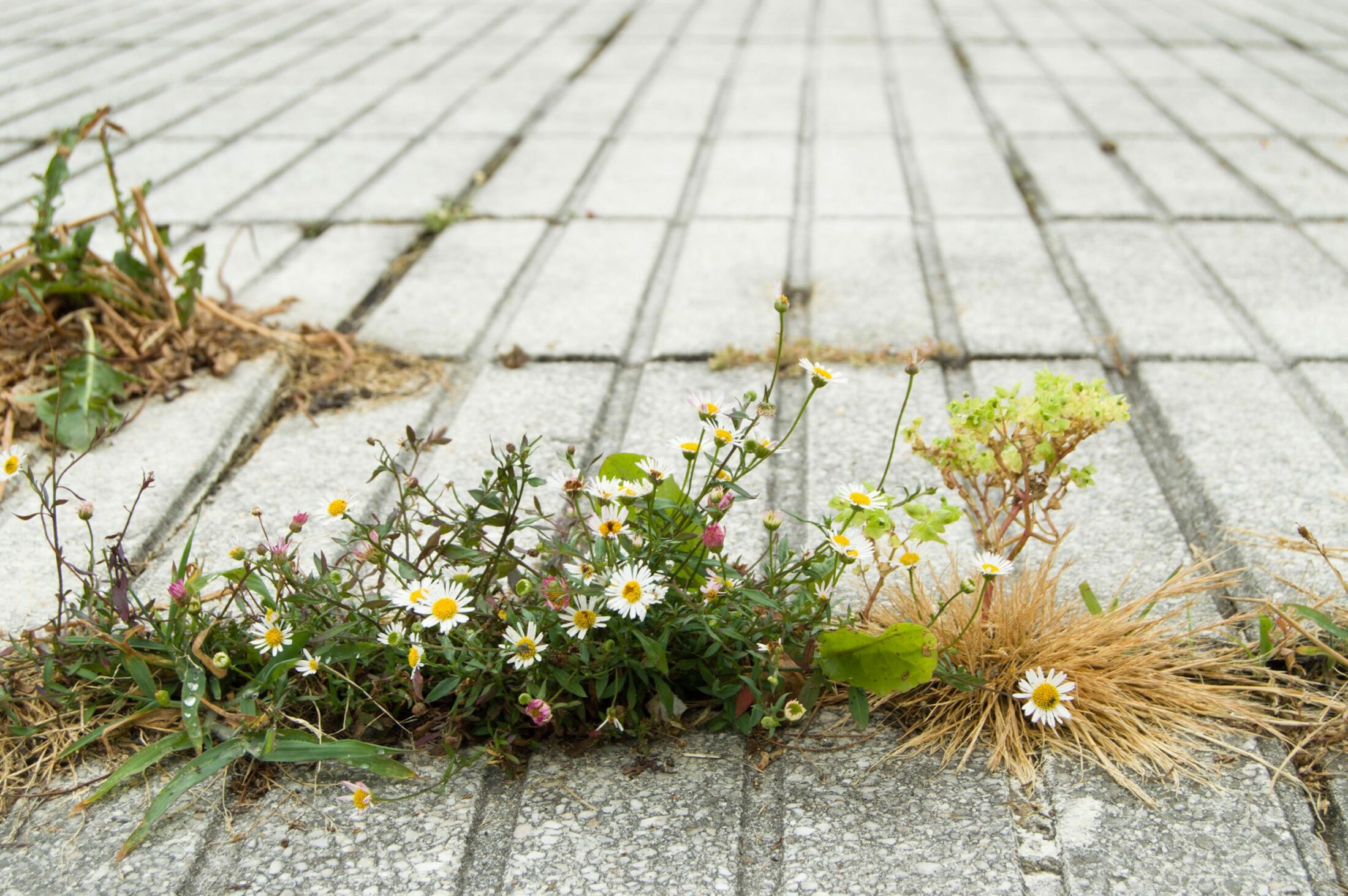
Pathways in the Urban Wild
As Lucy Jones and her daughter encounter wildflowers in a housing development, Lucy considers the healing benefits of an attentive relationship with the living world and the complex barriers to that relationship within urban areas.
